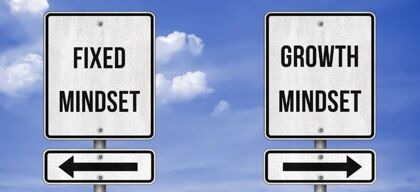‘I’ in communication

Learning & Development
234 week ago — 5 min read
What is your first thought when you read the title? It is very possible that you thought about the ‘me’ in communication. I would have done the same until I had this session with my fellow counsellors when I got this insight about the topic. I then realised that this is probably something worth sharing my views about.
A manager in an IT company was talking to me the other day and said, “I had this team meeting and at the end of the meeting I made some statement and in hindsight I thought it was rude”. He quoted another instance. “I was in this meeting and at the end I told this colleague of mine that it looks like you always want to have the last word”. This was about a year and a half ago and it still bothered him.
I heard many such instances where the clients had said something because of which the other person felt hurt, sad, and angry and the client then wonders what happened.
By now, I assume you would have guessed the “I” in communication that I am referring to. Yes it is the INTENT of communication.
When we start with a communication the intent is still in our head. The whole objective of communication is to ensure the intent that we have in our head is understood by the listener. We do this through our verbal and non-verbal communication. However, what is understood by the listener is not always what we wanted to convey. Apparently, there is a gap between what we intended (our thoughts) and what we communicate (our behaviour).
Also read: Effective communication skills for entrepreneurs
When the listener observes the body language and listens to the words used and the way it is said, the listener attaches a meaning to what is observed. This meaning is attributed based on what the listener picked up from the verbal and non-verbal cues and how they mapped it to what they already know (could be part of a judgement process).
When the meaning attached by the listener is different from the meaning attached (intent) by the sender, we have a miscommunication. What follows is a reaction to the meaning as understood by the listener. You said this, no, I didn’t mean it that way and so on goes the conversation.
So, as the sender how can you ensure there is no gap between what you intended to say and what you are actually saying and how the other person understands it. An effective communication is one which reduces the gap in all these cases.
- First thing first, be clear on what your intent is. What do you want to achieve through this communication? – Thoughts and outcome
- Understand the context in which you are saying. Who are your audience, what is the emotional state all are experiencing? – Context and emotions
- Form the statements. Write it down and read it, say it and listen to it, feel it and see if it conveys what you really wanted to convey. - Behaviour
- Fine tune the language to keep it simple. Lot of times misinterpretation happens when the language is not understood. Use simple words to explain rather than flowery words and jargons.
- Ensure your thoughts and actions are in congruence
If you are the listener what can you do to ensure the communication is effective?
- Pay close attention to what is being said. Observe the body language, tone and the words. Remember 93% of the communication is non-verbal
- Ask questions to clarify if you have not understood any part of the statement
- Paraphrase what you have heard to let the sender know what you have understood. Paraphrase does not mean you parrot what was said but in your own words explain to the sender what you understood
- Pay attention to the context in which it is being said.
Also read: Entrepreneurial mindset to build emotional immunity: Need for the new norm in life & business
Image source: shutterstock.com
To explore business opportunities, link with me by clicking on the 'Connect' button on my eBiz Card.
Disclaimer: The views and opinions expressed in this article are those of the author and do not necessarily reflect the views, official policy or position of GlobalLinker.
Posted by
Gopalakrishnan SubramanianI am on a mission to transform millions of lives to lead a life of happiness and abundance by helping them gain clarity and positivity of their self.
Network with SMEs mentioned in this article
View Gopalakrishnan 's profile
SME Inspirations
Other articles written by Gopalakrishnan Subramanian
Change Attitude to Reach Effectiveness (CARE)
151 week ago
Can you unlock your blueprint for life?
198 week ago
5 questions you can ask yourself every day
199 week ago
Most read this week
Trending















Comments (2)
Please login or Register to join the discussion